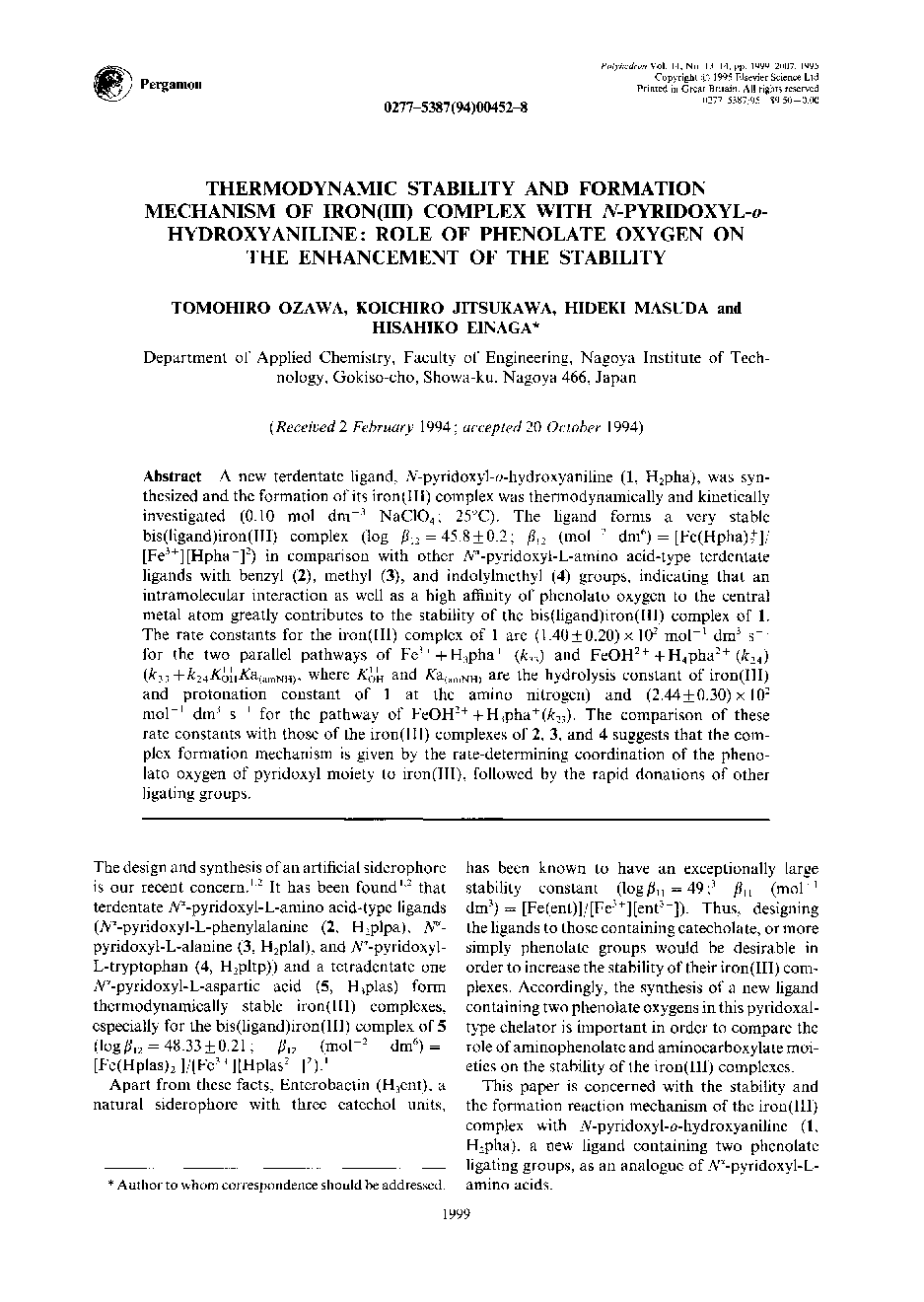| Article ID | Journal | Published Year | Pages | File Type |
|---|---|---|---|---|
| 1342884 | Polyhedron | 2007 | 9 Pages |
A new terdentate ligand, N-pyridoxyl-o-hydroxyaniline (1, H2pha), was synthesized and the formation of its iron(III) complex was thermodynamically and kinetically investigated (0.10 mol dm−3 NaClO4; 25°C). The ligand forms a very stable bis(ligand)iron(III) complex (log β12 = 45.8±0.2; β12 (mol−2 dm6) = [Fe(Hpha)2+]/[Fe3+][Hpha−]2) in comparison with other Nα-pyridoxyl-L-amino acid-type terdentate ligands with benzyl (2), methyl (3), and indolylmethyl (4) groups, indicating that an intramolecular interaction as well as a high affinity of phenolato oxygen to the central metal atom greatly contributes to the stability of the bis(ligand)iron(III) complex of 1. The rate constants for the iron(III) complex of 1 are (1.40±0.20) × 102 mol−1 dm3 s−1 for the two parallel pathways of Fe3+ + H3pha+ (k33) and FeOH2+ + H4pha2+ (k24) (k33 + k24KOH11Ka(amNH), where KOH11 and Ka(amNH) are the hydrolysis constant of iron(III) and protonation constant of 1 at the amino nitrogen) and (2.44±0.30) × 102mol−1 dm3 s−1 for the pathway of FeOH2+ + H3pha+ (k23). The comparison of these rate constants with those of the iron(III) complexes of 2, 3, and 4 suggest that the complex formation mechanism is given by the rate-determining coordination of the phenolato oxygen of pyridoxyl moiety to iron(III), followed by the rapid donations of other ligating groups.
